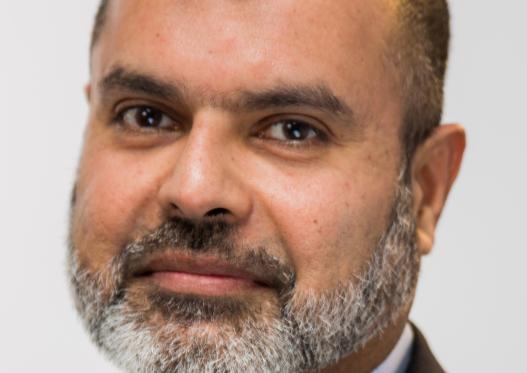Australia’s Consumer Data Right (CDR) is continuing to grow and is helping accredited data recipients to deliver innovative solutions for consumers. It gives consumers control over how and with whom their data is shared.
The Consumer Data Right or ‘Open Banking’ officially went live in Australia on 1 July 2020 with four major banks as data holders sharing data for simple transaction accounts and credit cards, with a phased implementation timetable that essentially requires data sharing by all Authorised Deposit-taking Institutions (ADIs), for all customers, and all standard products, when requested by the customer. By international comparison, the scope of Australia’s Consumer Data Right is ambitious.
The Australian Competition & Consumer Commission (ACCC) publishes a register of all CDR participants and representatives at cdr.gov.au/find-a-provider. Almost three years on from the official launch, the data holders now sharing data include 113 bank and credit union brands representing 76 ADIs, who collectively account for approximately 99.8% of bank lending to Australian households and 99.7% of bank deposits by Australian households, based on APRA monthly banking statistics. In practical terms, the Consumer Data Right already makes near-ubiquitous banking data available to any accredited data recipient.
(A small number of ADIs not yet sharing data include those with ongoing exemptions granted by the ACCC, those with no relevant products – for example ADIs who focus on providing payment settlement services, and some very small ADIs whose exemptions have expired but are not yet compliant. Collectively their market share is negligible.)
Data sharing by Energy retailers was added in November 2022, with Australia’s three major energy retailers actively sharing data. Roll-out to the energy sector is continuing.
Data recipients must be accredited by the ACCC. There are 28 active accredited data recipients, and another 75 ‘CDR representatives’, which are organisations able to receive CDR data through another accredited data recipient. Another 11 organisations have been accredited but are not yet active. Between them the active accredited data recipients have 98 active ‘software products’ through which consumers can request that their data be shared.
A variety of innovative customer experiences are emerging. They include several organisations including banks, non-bank lenders and a major mortgage aggregator now using consumer transaction history data to verify income and expenses to support lending decisions.
Aside from the potential to reduce the cost of verifying income and expenses, lenders that can make faster loan decisions to fulfil their customer’s need before their competitors, are more likely to win that customer’s business. At the same time, using comprehensive banking data to inform each loan approval has the prospect of leading to better quality lending decisions, with benefits to both the lender and the consumer.
Several banks are offering ‘personal financial management’ tools which offer consumers a consolidated view of their accounts from multiple institutions, either through their main banking app or a companion app. Those tools can help the bank to better understand their customer, and potentially help drive customer acquisition and gain more ‘share of wallet’ from existing customers over time.
Other data recipients and representatives are using CDR data to augment their payment processes. That can include verifying the ownership of a bank account prior to establishing a new customer relationship, to prevent fraud and comply with anti-money-laundering requirements, or pre-emptively checking the balance of a consumer’s account before a direct debit is due, to prevent and proactively manage arrears for utility bills. The Consumer Data Right makes available data elements including the name of the account owner, and the balance of the account, that may not otherwise be available through the relevant payment system.
More innovative uses of CDR data include using a consumer’s transaction history data to estimate a consumer’s carbon footprint, and using their historical energy usage data to evaluate the size of solar panels needed to meet a household’s energy needs. Over time, cross-sector uses of data could help establish financing of energy efficient assets required to reduce carbon usage. Other services already being offered include using CDR data to help financial advisors better understand their clients’ situations and needs to support providing financial advice.
Banks and credit unions have already invested significant resources to comply with the obligation to share their customers' data through the Consumer Data Right. With easy access to data held by their competitors now possible, making good use of CDR data has potential to help win new customers, provide a better customer experience, remove customer friction and delays, and take out costs.
Some non-bank lenders are already using CDR data to compete, and Treasury has previously consulted on expanding data sharing obligations to non-bank lenders. The recent federal budget included funding to expand the Consumer Data Right to non-bank lending, which will further broaden the scope of data available for sharing, and funding for policy and design work for CDR action initiation.
While the Consumer Data Right is a complex technology ecosystem, there’s a maturing group of technology providers actively working in CDR, including seven of the accredited data recipients who support representative arrangements. Anyone wanting to utilise CDR data can either apply for accreditation in their own right or seek a representative arrangement. Authorised Deposit-taking Institutions (ADIs) can access streamlined accreditation with substantially reduced requirements.
Following a series of high-profile data privacy breaches, Australians have become more aware than ever of the need to protect their information security. With that heightened awareness, and the Consumer Data Right offering a safer alternative, it’s difficult to see consumers continuing to share their internet banking passwords to support the practice known as screen scraping, or being willing to e-mail sensitive financial documents. A number of organisations have already abandoned screen scraping in favour of the Consumer Data Right.
A statutory review of the Consumer Data Right in 2022 recommended that ‘Screen-scraping should be banned in the near future in sectors where CDR is a viable alternative’. The Government response to that review noted that recommendation and indicated that ‘the Government will consult on policy options for regulating screen scraping’.
The importance of data sharing through the Consumer Data Right shouldn’t be assessed in isolation, but as one of the critical pillars of our future digital economy, together with real time, data rich payments and reliable digital identity services. Recognising this interconnectedness, the Strategic Plan for Australia’s Payments System released this month by the Commonwealth Treasury included ‘Aligning payments system objectives and the CDR framework’ as an objective within the key priority of ‘Uplifting competition, productivity and innovation across the economy’.
The organisations making the best progress in the Consumer Data Right have tended to start with one small service and expand their offering over time. For organisations that haven’t yet started the journey, a great way to start is to ensure your digital and data strategy is updated to include opportunities to make use of CDR data, and to have a well-developed investment proposal ready in time for your next round of investment prioritisation.
Innovation through the use of data can include finding better and cheaper ways to do things that have been done in the past, as well as creating new experiences that have never been offered before. As the Consumer Data Right continues to evolve from early adoption to a mainstream expectation, the competitive landscape will surely favour those organisations who can provide great customer experiences with minimal friction.
About the author:
Paul Franklin (SF FIN) has extensive experience in banking and payments. From January 2020 to May 2023 he was Executive General Manager, Consumer Data Right at the Australian Competition and Consumer Commission (ACCC). He recently resigned from the ACCC to pursue future opportunities in the private sector.








